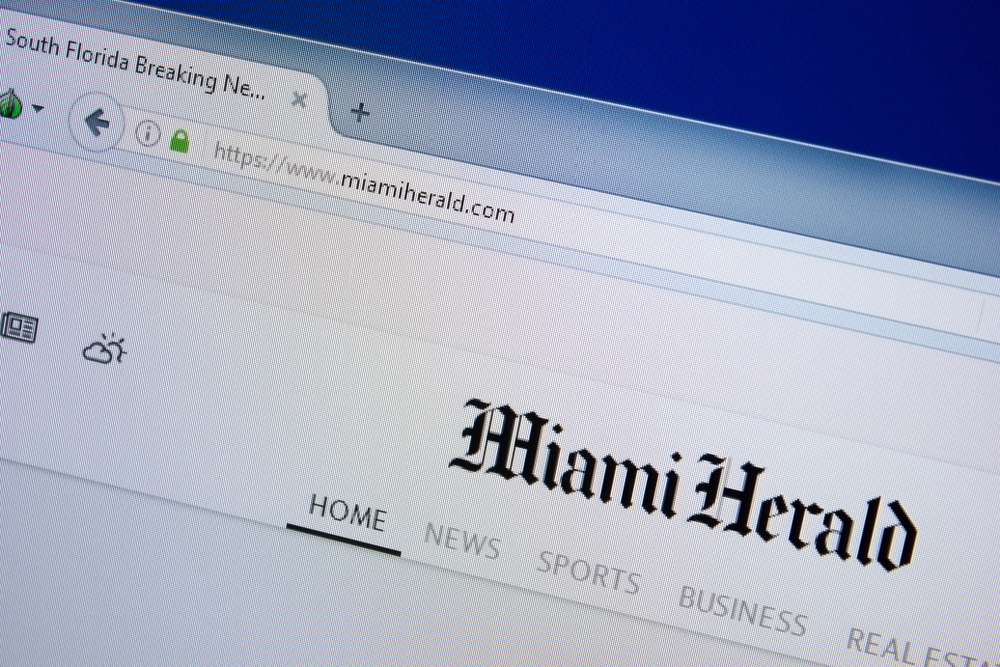BLOG
The firm’s latest Miami Herald “Real Estate Counselor” column was authored by shareholder B. Michael Clark, Jr. The article, which is titled “Start of Potentially Historic Storm Season Calls for Effective Planning for Associations,” focuses on the portentous start to this year’s hurricane season and the best practices for storm preparations for associations. It reads:
This year’s hurricane season got off to an ominous beginning. Just over a week after its official start on June 1, the National Hurricane Center’s forecasters spotted the Gulf of Mexico’s first tropical disturbance of the year. It went on to drench South Florida for several days and wreak historic flooding as well as dangerous thunderstorms across large swathes of the state.
Perhaps more troubling, this was not even the first tropical disturbance of the year. The NHC’s experts also tracked two other tropical waves in the Atlantic in mid-May, and those followed predictions by its forecasters that the 2024 hurricane season could be among the most active in modern history due to the return of La Niña as well as record warm waters.
For South Florida residents, and especially for condominium associations located in evacuation zones on or near the coast, hurricane preparations at the start of the season and in advance of any storms should become standard operating procedure.
For associations, one of the best places to start is with the documentation they may need in the event of a storm. A roster of current residents including complete mobile phone and email contact information is imperative. It should be kept in both hardcopy and digital forms in several secure on-site locations, e.g., the association and the property management offices, as well as also at accessible off-site and online locations via such providers as Amazon, Apple and Google.
Accompanying the roster should also be a copy of the association’s governing documents, a certified copy of the association’s insurance policies, the insurer’s contact information for new claims, bank account/financial information and documents, service provider contracts, and contact information for all staff and vendors.
At the start of the season and/or in the days leading up to a storm, associations should take date-stamped photos and videos of the entire property for insurance purposes. This should include building interiors and exteriors, including all the common areas, HVAC equipment, amenities, offices, and computers. All of the images and videos should also be added to the association’s online caches of documents and data.
Before any storms are threatening, associations may also wish to consider pre-negotiated contracts with services providers that will assist with any necessary cleanup and restoration efforts in the immediate aftermath. These include water restoration companies to mitigate flooding, debris removal companies, and security providers.
Bear in mind that association directors and personnel may not be able to access buildings located in heavily impacted areas for days after a storm. Communities in evacuation areas will need to implement a method/location prior to any storm impacts for the board and management to hold emergency offsite meetings.
One of the first orders of business after a storm has passed will be documenting any damage via thorough photos and videos, which should be taken prior to any repairs or clean up. Roof damage should only be assessed with extreme caution and under the guidance of qualified professionals. In addition to potentially dangerous conditions, insurers could argue that the damage was exacerbated by individuals walking on the roof to take photos/videos and/or install tarps. If possible, the use of drones should be considered to document any damage that is not visible from the roof access door.
Immediately following all of the documentation, the focus should turn to repairs, starting with preventing any further damage and ensuring safety. Some of the first places to start are typically covering and boarding up any damaged roofs and broken windows, and cleaning up the pool deck(s) and other common areas.
However, associations should avoid discarding any damaged property, as insurance adjusters should be provided the opportunity to see firsthand the entirety of the damage. Instead of arranging for its disposal, broken equipment and damaged property should be moved to a safe on-site location and kept until after the insurance inspections are completed.
Condominium associations and all affected owners should move quickly to file any storm and flood claims, and they may also wish to consider seeking the guidance of licensed and experienced public adjusters or, if necessary, insurance attorneys. . .
Michael concludes his article by noting that community associations and their directors should devote ample time and resources to their storm preparation and recovery plans, especially given the inauspicious start and outlook for this year’s hurricane season as well as the precarious state of the Florida insurance market. He writes that by implementing these and other precautions and best practices, associations can help to mitigate the disruptions and consequences caused by any storms that may be in store.
Our firm salutes Michael for sharing his recommendations for effective storm preparation and recovery measures for community associations with the readers of the Miami Herald.

